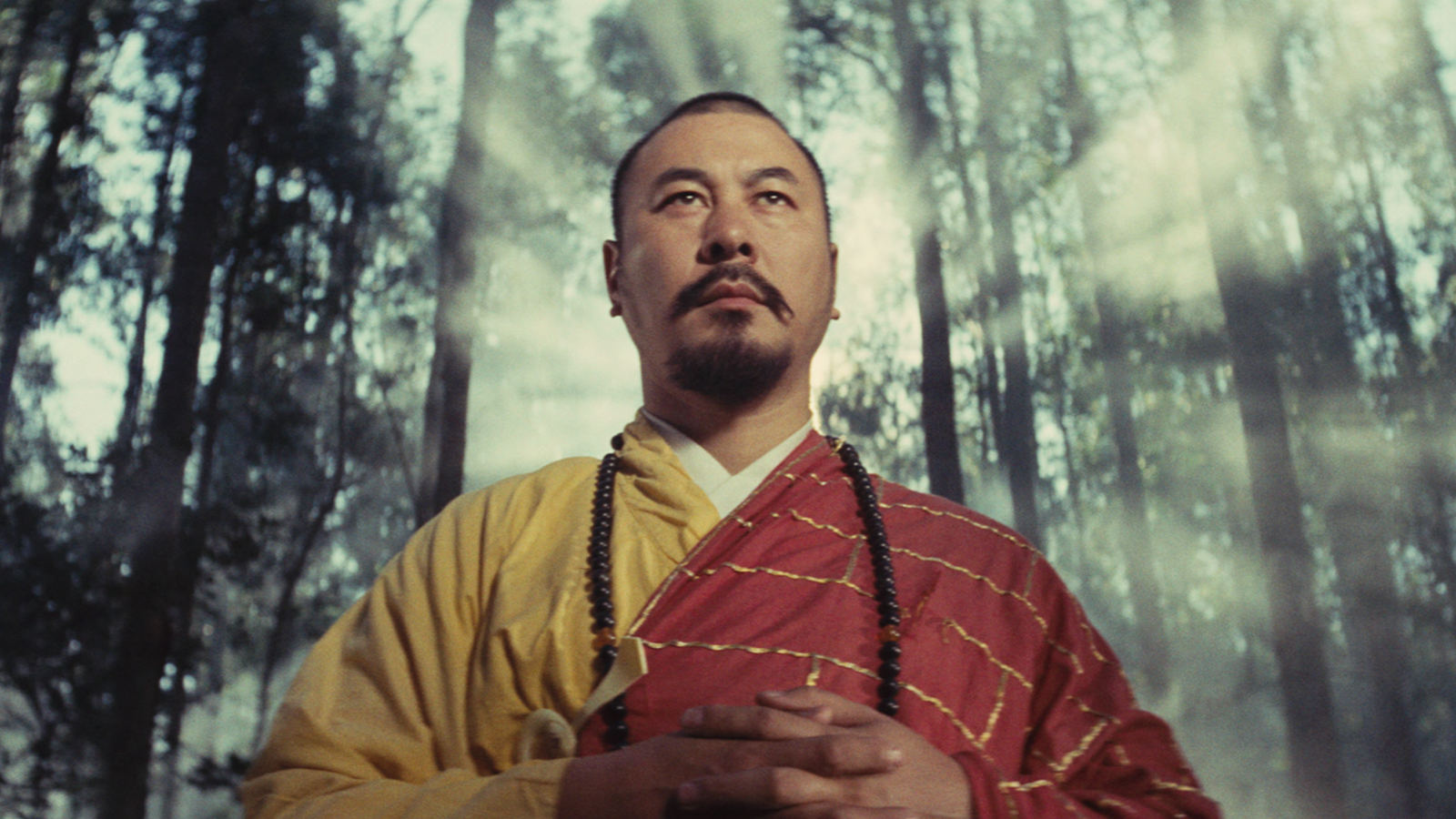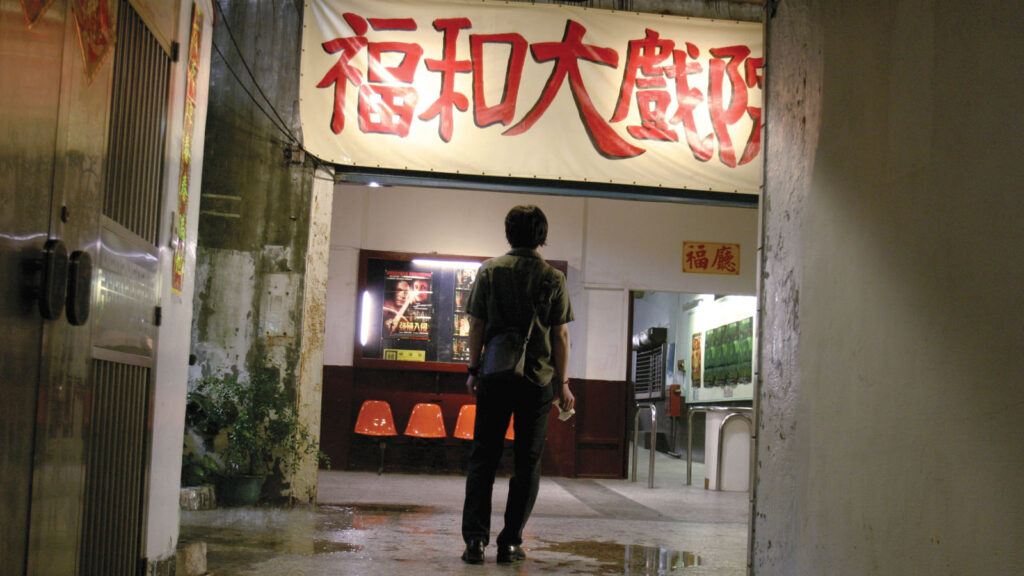From Page to Screen
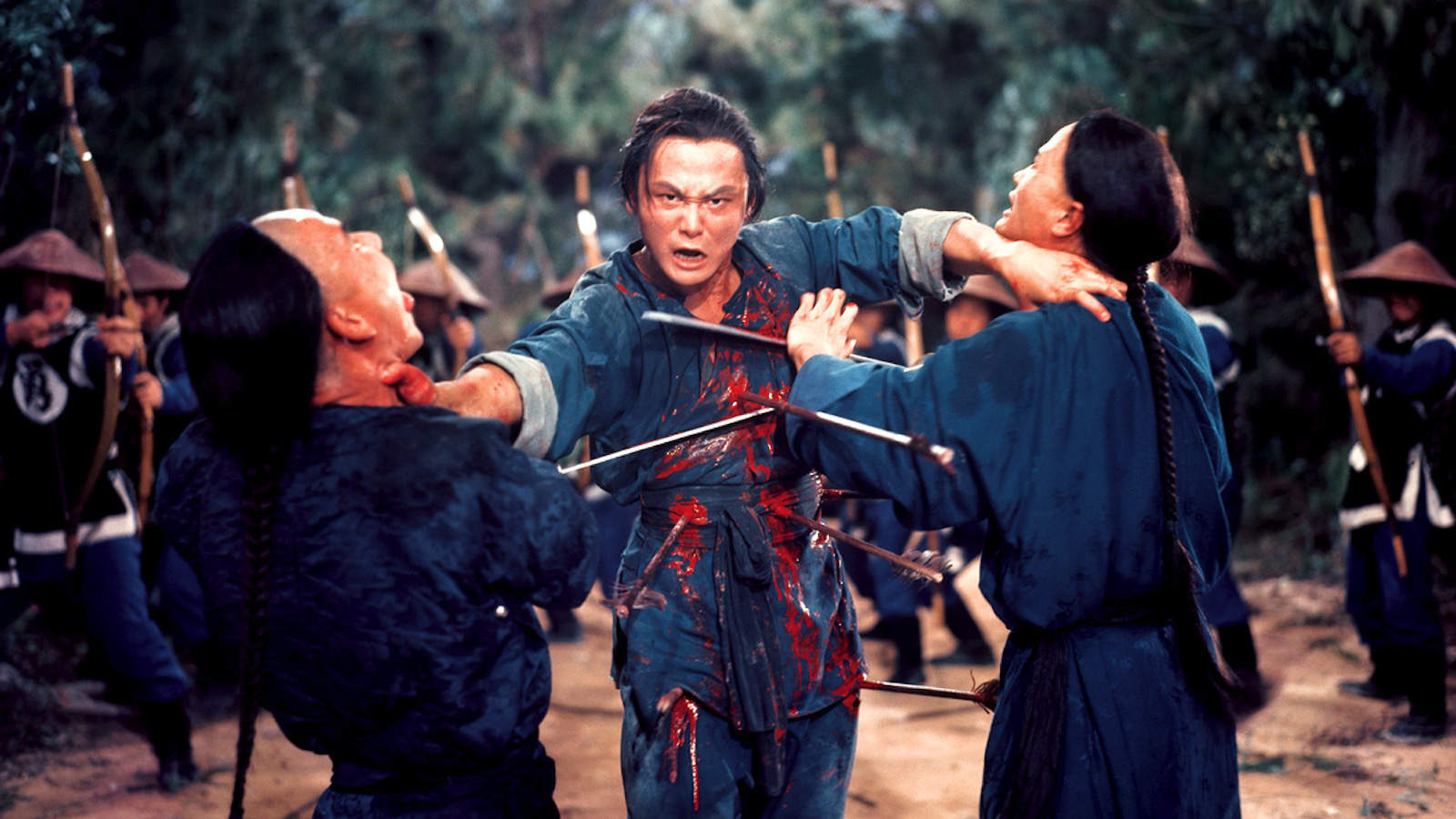
Essay
From Page to Screen
By Sam Ho
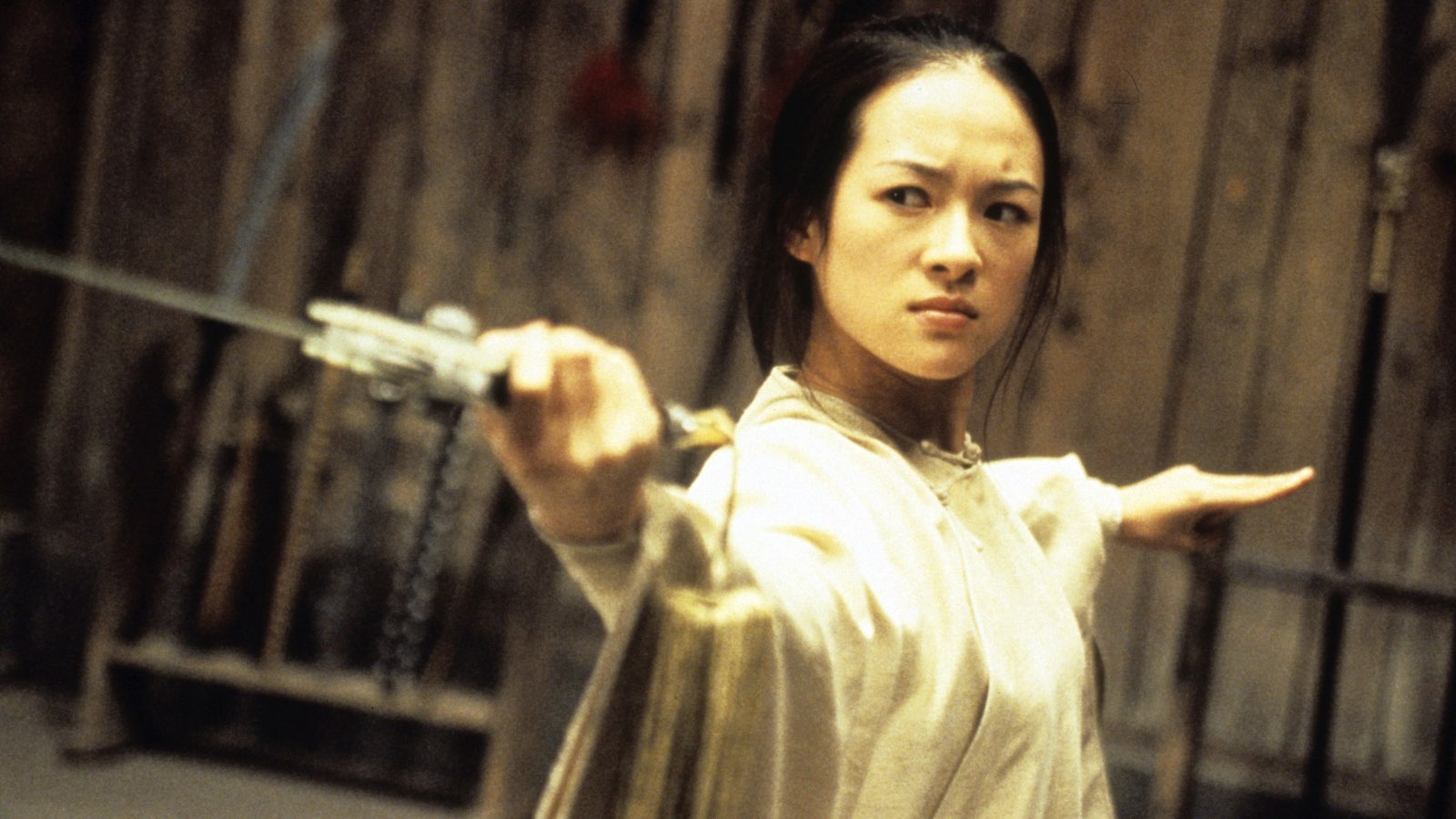
For many Americans, the martial arts hero exists only as a badly dubbed acrobatic avenger on scratchy celluloid, or as a fast-moving blur on video. But for the Chinese, he is a figure deeply ingrained in the Chinese psyche. He is our Robin Hood, our knight-errant, our ronin samurai, and our Westerner, all rolled into one. And he is over two thousand years old.
He first appeared in history around 400 BC but truly entered the popular imagination more than a millennium later, in the ninth century. It was the late Tang Dynasty, a period of social and political chaos, and the martial arts hero filled an urgent need for courage and justice. Since then, he has never left, changing with the times (but not too much) and accumulating thick layers of implication. His exploits were recounted orally or sung for centuries before the first of them was written down, and he was celebrated in print for several centuries more before his stalwart image was first imprinted on celluloid, in 1925, in a silent film produced in Shanghai.
Simply put, the xia is a chivalrous hero who possesses the ability to fight, and the martial arts novel (wuxia xiaoshuo) is a story form that celebrates his exploits, though its exact point of origin is still a topic of debate. Claims have been made for works dating back to the third century BC, while some accounts favor the Tang Dynasty (AD 618–907) or even the Qing (AD 1644–1911). (That martial arts are featured in some very early stories was never in doubt; the bone of critical contention is which story form most closely fits the modern concept of the novel.)
First things first: the English phrase “martial arts” and the Chinese term “wuxia” are not synonymous–although “wu” does, in an odd sense, mean “martial.” The Chinese word wu is written by combining two other characters, zhi and ge, meaning “stop” and “fight,” respectively. In other words, the term is an oxymoron, suggesting that it takes fighting to put an end to fighting, a paradox that is central to the appeal of the wuxia form. The term xia, however, has nothing at all in common with the English “arts.” It can be loosely translated as “chivalrous hero,” although that meaning incorporates connotations that have accumulated over time. Comprised of the words ren and jia, “person” and “armor”, it was used initially to refer simply to armed men, men who engaged in fighting?
In fact, in early Chinese writing, martial artists are often referred to with disdain. A thinker of the Warring States period (403-221 BC) considered the xia one of “five vermin” infesting society, a renegade who “violate[s] prohibitions by force (wu). By about 90 BC, however, the xia’s stock had risen considerably: He was described by one of China’s first professional historians as “honest in words, effective in action, faithful in keeping promises, brave in offering his own life to free the righteous from bondage.” Thereafter the xia was increasingly romanticized, in poetry, fiction and on the Chinese opera stage, before reaching the mythic position he occupies today, as the embodiment of China’s ideals of courage and personal honor.
Among the early, pre-novelistic story forms, the episodic prose romances (chuanqi) of the late Tang Dynasty are of particular significance. Though not devoted entirely to martial adventures, they include many anecdotes of wandering “knights-errant” who uphold justice, thus integrating for the first time the fighting ability of the heroes with their altruistic nature, the wu with the xia. Romantic entanglements also figure prominently, when love interests develop alongside the heroic quests, or when martial dimensions are introduced into what are primarily love stories.
From character types to story situations, many of the wuxia novel’s conventions were already well established. The title character in the story Just Swordsman, for example, is a hired killer who, instead of carrying out his mission to assassinate a righteous official, turns around and kills the villain who hired him, when he discovers the latter’s ignominious designs. But the chuanqi’s most monumental contribution is perhaps the introduction of the “woman xia,” the xia nü, into the popular imagination, the most notable being Nie Yinniang, Hong Xian and Xie Xiao’au, collectively known as the “Three Women Xia of Tang.”
It is fascinating to watch the various elements of the modern wuxia story being added to the mixture over the years. Another important contribution of the Tang prose romances, for example, is the introduction of elements of fantasy, inspired by the shenguai (gods and demons) literature that was popular in the earlier Six Dynasties period (AD 222-589), such as the aptly titled Chronicles of Searching for Gods (Sou Shen Ji). Inspired by these examples, the xia began to flaunt supernatural powers: launching flying swords like projectiles, leaping from one locale to another miles away, or even turning inanimate objects into living beings, like animal dolls that come to life to fight other “animated” simulacra.
Liang Yusheng, one of the best-known modern wuxia novelists, maintains that the political instability of the Tang period contributed to the popularity of its wuxia-flavored prose romances, as both writers and readers sought refuge in escapist fiction. As such, the historical circumstances of the Tang Dynasty were paralleled in the early republican era and in the years before and after World War II, two other periods of great upheaval in which the wuxia novel achieved remarkable breakthroughs in creativity and enjoyed tremendous popular support.
Throughout the many ups and downs of Chinese history, wuxia fiction has continued to thrive. A couple of milestones appeared in the Ming Dynasty (1368-1644): the novels The Water Margin (Shui Hu Chuan) and The Romance of Three Kingdoms (San Guo Yan Yi). The Water Margin started out as embroidered oral legends inspired by vaguely remembered historical events. In the Yuan Dynasty (1280-1367), the stories were collected into a prose romance, written and revised by a series of known and unknown writers. By the Ming Dynasty, it had become a novel with hundreds of chapters, written in colloquial language that greatly enhanced its readability. The Romance of Three Kingdoms is actually more historical fiction than wuxia novel, but it was immensely popular and the three “blood brothers” at the center of the story cast the mold for chivalric relationships among men in future wuxia forms. Guan Yu, one of the “blood brothers,” has become the god of martial artists, still worshipped today by cops and Triad members alike and featured frequently in John Woo’s “hero films” as a symbol of chivalry.
He is our Robin Hood, our knight-errant, our ronin samurai, and our Westerner, all rolled into one.
Wuxia heroes became so popular that they were often introduced as supporting players in works in other genres. In the Qing Dynasty in the 17th century, popular fictions like the so-called gong an (“public cases”) novels were detective stories about imperial magistrates such as Judge Di and Judge Bao, who enlisted possess of colorful xia as their assistants or enforcers. Many story situations that ariginated in these loosely structured works went on to become wuxia staples. The Seven Heroes and the Five Gallants (Qixia Wuyi, 1889), for example, is still nominally a Judge Bao detective story, but the emphasis is less on the magistrate’s crime-solving abilities than on the chivalrous deeds and awesome heroics of his constables, who have become the central characters. One of the novel’s featured fighting forms is the striking of acu-pressure points to immobilize opponents, a much-imitated device that surfaced recently in Ang Lee’s Crouching Tiger, Hidden Dragon (2000), when Bo, the security chief, is frozen in mid-fight by Cheng Pei-pei’s Jade Fox.
The martial hero has been a consistently popular fellow for tens of generations, but it was not until the early republican era, soon after the turn of the last century, that the wuxia novel truly came into its own as a genre of popular fiction in the modern sense, first of all with the introduction of the term itself. Ironically, the word used to designate this most Chinese of story forms was coined by Japanese novelists in the 19th century. Chinese scholars living in Japan borrowed this usage for their own critical writing, introducing it into the Chinese lexicon. In spite of the form’s deep roots, in other words, the very first “official” wuxia novel was published only in 1915, followed quickly by a host of others.
Most of these stories featured similar plot constructions that were already firmly established genre conventions: revenge, rivalries between different martial arts schools and power struggles among clans, all animated by detailed descriptions of fighting styles. Unlike the early prose romances or the gong an detective stories, these works feature martial artists as their central characters exclusively, with the heroes embodying an altruistic ideal that manifests itself as an unwritten but rigid moral code. In other words, they are the xia. The villains, obviously, are those who violate that code, even when they possess the same fighting abilities as the heroes. The conflicts between these characters, therefore, can only be solved by the exercise of that fighting ability—in short, the wu.
Their martial ability as well as their noble natures set the xia apart from ordinary folks, somewhat literally. They interact in a parallel universe known as the jiang hu, governed by the wuxia code, in effect a set of rules separate from the laws of the land. The Chinese for jiang hu is “rivers and lakes,” which indicates that though primarily a state of mind, it is anchored in the physical world. The domain of the martial artist is therefore a subculture, at once a part of the real world but also apart from it.
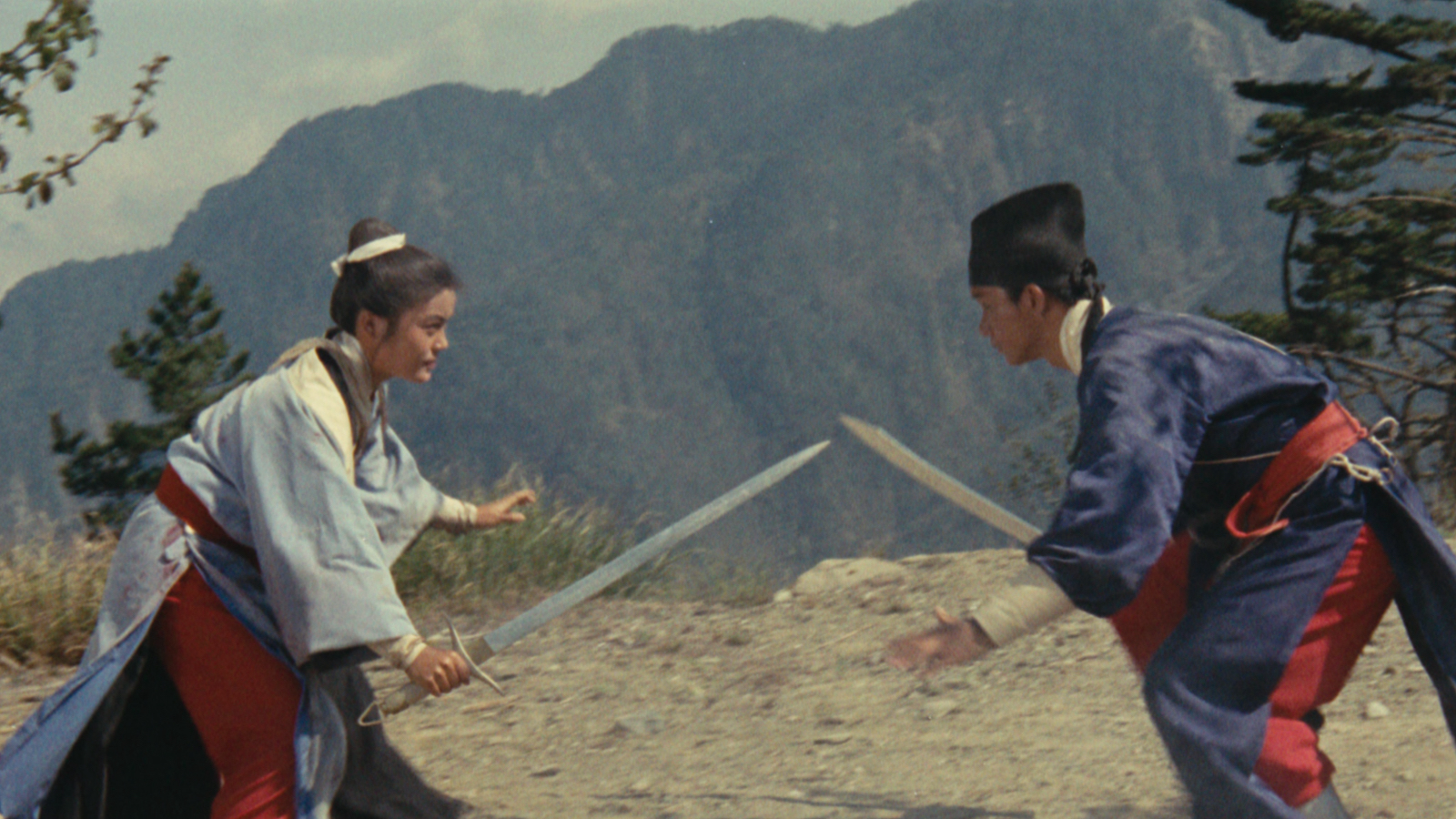
The genre soon became wildly popular. In addition to its headlong story appeal, readership was enhanced by two social factors. First, in response to a populist movement to promote literacy, the novels were written in the form of conversational Chinese known as bai hua wen (“plain speaking words”), as opposed to the scholarly wen yan wen (“literary words”). Also, newspapers had arrived on the scene and were competing fiercely. Many started carrying serial novels to build circulation, and one of the breakthrough works of this type was Xiang Kairan’s Legend of the Strange Hero (Jiang Hu Jixia Zhuan), serialized in the early 1920s and published in book form in 1928. Combining the chivalrous adventure of the Tang prose romances with the fantastic imagination of the gong an detective stories, the story presents in 150 chapters an addictive hodgepodge of iconoclastic characters, serpentine plot twists and high-flying fights.
Witnessing the triumph of the Strange Hero, the entrepreneurs of a new entertainment medium decided to capitalize on his popularity, and the 1928 silent feature Burning Of The Red Lotus Monastery became a huge box-office hit. Red Lotus was not the first wuxia movie; Swordswoman Li Feifei (1925) earned that distinction. But it was “the first attempt to adapt a popular wuxia novel onto the screen.” Though only a 20-minute fragment of Red Lotus survives today, and very little at all is known about Li Feifei (the film is presumed lost), enough was written about Red Lotus to give us a sense of what it must have been like to watch. The film concentrates on several chapters of the novel, telling the story of a fight for dominance among village power clans and martial arts schools. Archetypal situations of the genre are already evident, such as the struggle between good and evil, the structure of putting the heroes through a series of increasingly fierce confrontations, and the characters’ embodiment of the Three Confucian Virtues of Bravery, Intelligence and Charity. Action scenes also take on the fantastic dimension of the Tang novels, featuring such supernatural skills as flying daggers (in the form of “white light” painted on film stock), disappearing acts and earth-burrowing abilities. Audiences were so enthusiastic that 18 sequels and dozens of imitations quickly followed.
In the 1930s the genre made great strides in both creativity and popularity, facilitated by the emergence of a new class of professional writers. Most early wuxia novels were written by scholars who dabbled in period fiction as a hobby. But the practice of newspaper syndication created urgent demands for stories and attracted writers who either needed to make a living or could now afford to write full time. Li Shoumin, for instance, began writing Chivalrous Swordsmen of the Sichuan Mountains (Shushan Jianxia Chuan) under the pen name Huanzhu Louzhu (“Master of the Pearl-Rimmed Tower”), for a newspaper in Tianjin in 1932. But what he at first regarded as a potboiler developed chapter by chapter into an exemplary, epic work in the subgenre known as shenguai wuxia, a form resembling “sword and sorcery” heroic fantasy which can be traced back to the Six Dynasties era of the third to sixth centuries. In his landmark study The Chinese Knight-Errant, James J.Y. Liu offers a vivid description of Huanzhu Louzhu’s novels: “The heroes and heroines are swordsmen and swordswomen with magical powers: they can turn their swords into death rays and conceal them in their bodies. They can ride the air on these rays or on trained birds. They perform miracles and kill monsters. Many of them are Buddhist or Taoist [Daoist] priests, and the rest also tend to lead a life apart from ordinary men.”
China’s three major schools of belief, Confucianism, Buddhism and Daoism are simmered in Huanzhu Louzhu’s melting pot, their essences interacting with the fighting ethos of wu and the chivalrous spirit of xia to produce a magic potion that nourished the genre for decades. Huanzhu Louzhu himself wrote a large number of sequels, prequels and spin-offs (this one-man franchise runs to 27 novels in more than a hundred volumes), and many other writers imitated him blatantly: his florid emphasis on atmosphere, his extravagant leaps between the human world and the eyre of the god-like xia. Through these tributes and imitations, many of Huanzhu Louzhu’s innovations soon made their way onto the screen: Fights against monstrous creatures became a staple ingredient in Cantonese wuxia films of the 1950s and ’60s, along with secret scrolls, magic potions, and cameo appearances by monks, nuns and wizard-like Daoists. The most celebrated direct adaptation of his work, Tsui Hark’s Zu: Warriors From The Magic Mountain (1983), was nothing less than a milestone in Chinese cinema. The use of computer graphics to animate the original novel’s blend of Confucian, Buddhist and Daoist thought with the wuxia spirit updated the Chinese imagination by reconciling traditional beliefs with modern technology. It also strengthened the industrial base of Hong Kong cinema itself, contributing significantly to the industry’s renaissance in the 1980s.
Wang Dulu was another pivotal figure of the 1930s who began writing out of necessity. Barn into a noble family fallen on hard times, and forced to turn out wuxia novels at a tremendous pace to make a living, Wang nevertheless brought so much intensity to the task that he had a lasting impact on the genre. In his literary temperament Wang was almost the polar opposite of the flamboyant Huanzhu Louzhu, downplaying elaborate martial exploits and flights of fantasy to focus instead on characters and drama—even melodrama. He devoted a lot of attention to the romantic side of the martial hero and to the social pressures on both the hero’s love life and his martial practice. So heart-wrenching are the characters’ loves, so noble are their chivalrous sacrifices that Wang came to be known as the founder of the “tragedy of chivalrous love” (bei ju xia qing) school of wuxia novels. He gave legitimacy to the figure of a martial hero endowed with both “chivalrous bone and tender love” (xia gu rou qing)–an archetype nobly represented by Chow Yun-fat when a section of Wang’s most popular work, The Crane-Iron Pentology (serialized from 1938-1942) was filmed by Ang Lee as Crouching Tiger, Hidden Dragon.
With writers as different as Wang Dulu and Huanzhu Louzhu elaborating upon the genre, wuxia fiction enjoyed a fruitful expansion of its boundaries. At the same time, it was being recognized as a major literary and social force, though not by the intelligentsia. So powerful was this force that when China was split in two after 1949, wuxia novels by writers with even rumored connections to opposition parties were banned by repressive governments on both sides of the Taiwan Strait. Hong Kong was the only major Chinese community where the wuxia form managed to survive.
Screenwriter and author Ni Kuang has referred to the unprecedented explosion of wuxia fiction in Hong Kong in the 1950s as the genre’s second golden age, after the upsurge represented by Huanzhu Louzhu and Wang Dulu. Introducing several breakthroughs in style and content, among them somewhat more realistic depictions of Chinese culture and forms of combat, the work of this period was soon dubbed “new style wuxia fiction.”
Hong Kong-based writers like Liang Yusheng and Jin Yong (aka. Louis Cha), influenced by modern ideas and western literature, attacked their stories of the 1950s with lively language and suspenseful plots. They also created characters who were much more individualistic and freewheeling than the somewhat priggish xia of previous generations, often delving deep into their psychology. Unlike the fanciful god-like figures of Huanzhu Louzhu, or the lovelorn, burdened souls of Wang Dulu, Liang and Jin’s characters embraced the freedom and non-conformity of the martial lifestyle. Followed by millions in Chinese newspapers around the world (though not, of course, in China itself), their stories appealed to a younger, more cosmopolitan readership.
Writing in colonial Hong Kong and freed from the ideological constraints of Mainland China, Liang and Jin also channeled their patriotic concerns into their work. Well-versed in Chinese history, they set their stories against carefully researched backdrops, favoring periods in which China was ruled by foreign forces, the Manchurians or the Mongols, striking chords with readers who had lived through the Japanese occupation or were heartsick over the domination of China by foreign powers. Yet Liang and Jin were also shrewd enough to retain what was most attractive in the work of their predecessors, the supernatural powers depicted by Huanzhu Louzhu, and the doomed loves movingly portrayed by Wang Dulu. The penetration of these works into the everyday lives of Asians cannot be overstated. Jin Yong, arguably the most important Wuxia author in history, reports in the revised edition of Laughing with Pride over Jiang Hu (Xiao’ao Jiang Hu, aka The Smiling, Proud Wanderer) that when the novel was serialized in Saigon newspapers during the Vietnam War, government officials embroiled in policy debates used the names of its villains as curses to insult their rivals.
Hong Kong cinema was also enjoying a growth spurt in the 1950s, and filmmakers naturally looked to the most popular wuxia novels for material. The novels of Jin Yong and Liang Yusheng, which often had dozens of chapters and hundreds of thousands of words, were typically adapted in several feature-length installments. Jin’s Legend of the Brave Archer (She Diao Yingxiang Chuan, 1957) and Story of the Book and the Sword (Shu Qian En Chou Lu, 1955), and Liang’s Story of the White-Haired Demon Girl (Baifa Monü Chuan, 1959) and Three Women Warriors (Jiang Hu San Nüxia, 1960) were all made with one or more sequels.
It was only years later that Jin Yong’s and Liang Yusheng’s works were enacted again on the big screen, although they had continued to be staple fare on television. In the 1990s, Tsui Hark and Ching Siu-tung turned Jin’s Laughing with Pride over Jiang Hu into the Swordsman series (1990-93). Wong Kar-wai’s partner Jeffrey Lau adapted Jin’s The Eagle Lovers (Shen Diao Xia Lu, 1959) as Savior Of The Soul (1991), and Wong himself took Legend of the Brave Archer (The Eagle-Shooting Heroes) as the jumping-off point for Ashes Of Time (1994), a new prequel that re-imagined the early lives of two of the novel’s minor characters. And Ronny Yu presented his own set of variations on Liang’s Story of the White-Haired Demon Girl in The Bride With White Hair (1993). Consistent with the flamboyant, high-flying style of 1980s and ’90s Hong Kong cinema, these were really reinterpretations of, even challenges to, the wuxia myth rather than true adaptations, executed with the directorial virtuosity and personal visions of a new school of filmmakers.
The hiatus in adaptations of classic wuxia stories was occasioned by a tide of change that swept through Hong Kong cinema in the 1960s and ’70s, spearheaded by the so-called “new school” of Mandarin wuxia films. With their elaborately staged action, quick-tempo editing and punchy plots, the films of Zhang Che (Chang Cheh), King Hu and others made the relatively faithful adaptations favored by Cantonese cinema look stilted and threadbare. Hu and Zhang, the top auteur directors of this new movement, which propelled the Hong Kong film industry into the “kung fu” era, preferred original scripts that they could shape from the ground up. Both adept visual stylists, they were also more concerned with the bravura staging of fight sequences than with plot or character. But that didn’t mean that the film industry had come entirely out of the wuxia novel’s shadow. Novelist Ni Kuang ( The Six-Fingered Lord of the Lute) plunged headlong into movies as an astonishingly prolific screenwriter, turning out literally hundreds of scripts and affecting great changes in the martial arts cinema. The central plot point of Ni Kuang’s script for Zhang Che’s One-Armed Swordsman (1967), the film that ushered in the Mandarin wuxia era, was inspired by a major incident in Jin Yong’s The Eagle Lovers, in which the hero’s arm is hacked off by one of his “martial sisters.”
Meanwhile, the wuxia novel, too, had continued to evolve. About a decade after the first appearance in print of Jin Yong and Liang Yusheng, another major “new style” figure emerged. Operating out of Taiwan, Gu Long rose to prominence in the mid-1960s and introduced radical changes that adapted the genre to the spirit of a new generation. Gu’s language was sparse and stylized, using totally unexpected words in increasingly short sentences and paragraphs, some only one word long. His dialoque, too, was laconic to a fault, forcing readers to intuit the characters veiled intentions. As such, his writing was thick with atmosphere, suggestive of the unknown and the dangerous. This style was perfectly suited to Gu’s intrigue-filled stories of rivalries between far-flung secret societies, influenced by detective thrillers and the James Bond films.
In a drastic departure from traditional wuxia novels, even those of other “new style” authors like Jin and Liang, Gu Long’s “hard-boiled” characters were not bound by any chivalrous code. Instead, they were amoral creatures not above fighting for money and gleefully indulging in mind games of manipulation, deception and betrayal. When they fight, they shun the elaborate martial moves of previous heroes, investing their energy instead in lengthy pre-fight confrontations that culminate in quick flurries of lethal blows, obviously influenced by the explosive encounters in samurai films and spaghetti Westerns. In fact, Gu Long’s writing was extremely cinematic, frequently adapting to prose such filmic techniques as mise-en-scène and rapid-fire editing, creating “stage pictures” in an almost theatrical sense with evocative physical descriptions. Which is exactly why he was able to effortlessly switch to screenwriting in the 1970s, penning scripts in Hong Kong and Taiwan that unmistakably bear his personal stamp, such as Jade Tiger (1977) and Magnificent Bodyguard (1978).
Gu Long’s novels were also popular fodder for adaptation by other Filmmakers. Most notable among them was director Chu Yuan (Chor Yuen), who filmed many of Gu’s novels, most of them scripted by Ni Kuang. Chu skillfully recreated the author’s world on film, using spectacular high- wire fight scenes, colorful costumes and fancy sets to realize the novel’s convoluted whodunit plots and quasi-existential plays of greed and desire. His adaptations were so faithful in spirit and so successful at the box office that they can be categorized as a Chu Yuan-Ni Kuang-Gu Long subgenre, with its own formulaic conventions and iconoclastic style.
New wuxia novels continue to be written and are still quite popular, though not nearly as hot as they were in the 1960s and ’70s. By and large, modern Chinese moviegoers seem to find more resonant metaphors for the conflict and striving of their lives in the wuxia surrogates of the gangster genre. On the other hand, a young writer named Yi Huang was the number one bestseller in Hong Kong for several months in 2002 with his epic Legends of the Far Wasteland; his earlier novel, Looking for Qin, is currently being adapted for television. Could this be the beginning of yet another “new style” of wuxia cinema, with fiction once again leading the way?
Sam Ho teaches at the Chinese University of Hong Kong and is the editor of the book, The Swordsman and His Jiang Hu: Tsui Hark and Hong Kong Film.
This essay has been reprinted with the permission of the author and UCLA.
